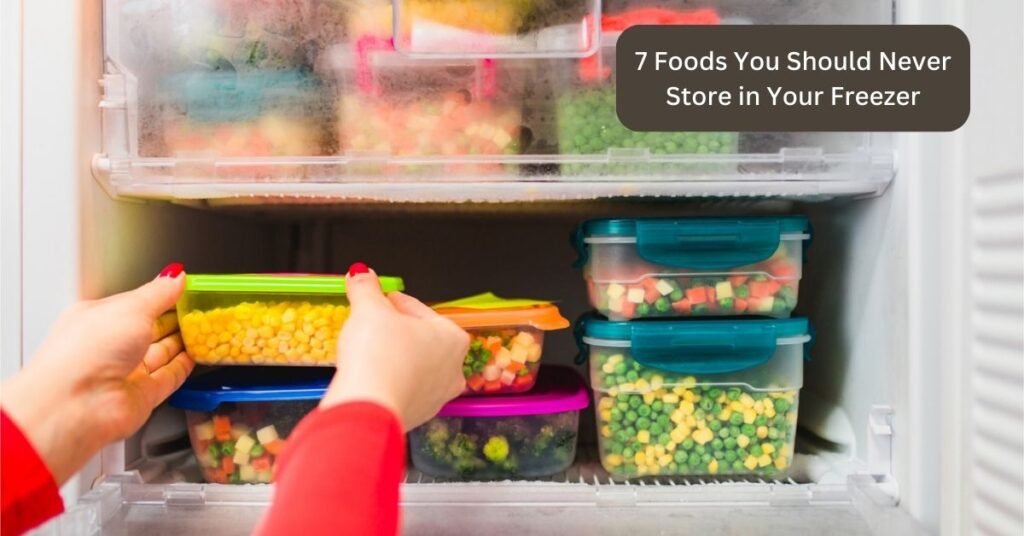In the icy realm of our freezers, where temperatures plummet to a chilly 0°F, a common misconception prevails – the belief that freezing is a one-size-fits-all solution for preserving our favorite foods and drinks. However, as we delve into the frosty archives of our food section, a revelation emerges: not all comestibles are meant to dance with the ice, ice, baby. Let’s unravel the chilling truth about the worst foods to freeze and why certain libations should remain untouched by the frozen grasp.
Preserving, But Not Always Pleasing
Contents
Meredith Carothers, a food safety specialist for the USDA’s Food Safety and Inspection Service, sheds light on the science behind freezing. While freezing effectively puts a pause on the microbial mayhem that leads to foodborne illnesses, it doesn’t guarantee an everlasting flavor fiesta. Over time, frozen foods may lose their culinary charisma, becoming a mere shadow of their fresh selves. So, before you send everything into a deep freeze, consider the quality implications.

The Forbidden Seven: Items That Defy the Freezer
1. Tender Fruits and Vegetables
Sarah Brekke, Test Kitchen brand manager, advises against freezing delicate fruits and veggies. Thawed lettuce, cucumbers, and celery metamorphose into limp, slimy versions of their former selves. Keep them crisp in your refrigerator’s crisper drawer and consume within 7 to 10 days. Raw potatoes, high in moisture, turn mushy when thawed; store them in a cool, dark place.
Test Kitchen Tip: If you’re adamant about freezing potatoes, cook them first. Mashed potatoes, casseroles, and soups freeze and reheat splendidly.
2. Emulsified Items
Mayonnaise and salad dressings, reliant on emulsification, suffer separation after a stint in the freezer. Keep these creamy delights in the refrigerator for optimal consistency. Homemade dressings are best used within 4 days, and from-scratch mayo within 2 weeks.
Test Kitchen Tip: Learn the art of interpreting “best by” and “use by” dates for a savvy approach to freshness.
3. Sour Cream and Other Dairy Products
Soft cheeses, sour cream, and viscous dairy products lose their appeal after thawing, presenting a watery, separated texture. Reserve these items for the refrigerator, adhering to USDA guidelines for consumption timeframes.
4. Gelatin Recipes
Jiggly delights with gelatin content are a no-go in the freezer. Ice crystals play havoc with their structure, resulting in a soupy mess upon thawing. Keep your gelatinous creations snug in the fridge.
5. Canned or Bottled Beverages
From soda to Sauvignon Blanc, freezing bottled and canned beverages is a risky business. The expansion during freezing may lead to burst packaging, creating a safety hazard and a potential mess.
6. Raw or Hard-Boiled Eggs in their Shells
Freezing eggs in their shells causes cracking and thickening of the yolk. For raw eggs, beat them together and store in an airtight freezer-safe container. Cooked eggs are freezer-friendly but aim to use them within 3 weeks after purchase.
7. DIY Fried Foods
While the supermarket’s frozen aisle boasts tempting fried delights, attempting to freeze homemade fried foods is a recipe for disappointment. The batter, crumb, or tempura coating absorbs moisture during freezing, resulting in a lackluster, soggy outcome. Keep your fried favorites airtight in the refrigerator and savor them within 4 days.
In Conclusion
The freezer, though a reliable ally in food preservation, isn’t a universal savior. Understanding the nuances of freezing ensures that your culinary creations retain their palatable prowess. So, next time you contemplate a rendezvous with the ice, ice, baby, tread carefully, for not all foods and drinks are meant to embrace the frosty embrace of sub-zero temperatures.
